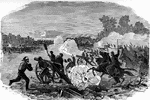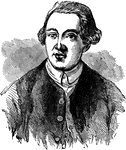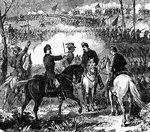
Battle of Pea Ridge
"Battle of Pea Ridge, Ark., fought March 6th, 7th and 8th, 1862, between the Federal forces, 13,000…

Battle of Pea Ridge
"Battle of Pea Ridge, Ark., fought March 6th, 7th and 8th, 1862, between the Federal forces, 13,000…

Battle of Plattsburg
The Battle of Plattsburgh, also known as the Battle of Lake Champlain, ended the final invasion of the…
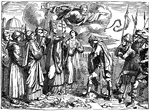
Pope Leo the Great Approaches Attila, King of the Huns, on the Battlefield
Illustration of Pope Leo, dressed in full papal costume and holding the primatial cross, approaches…

Battle of Princeton
The Battle of Princeton (January 3, 1777) was a battle in which General Washington's revolutionary forces…

A Puritan Soldier
A Puritan of 16th and 17th century England was an associate of any number of religious groups advocating…

Rall's Headquarters
Johann Gottlieb Rall (ca. 1726 - December 26, 1776 ) was a German colonel in command of Hessian troops…
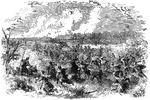
Battle of Roanoke Island
"Battle of Roanoke Island, February 8th, 1862- decisive bayonet charge of the Ninth New York Volunteers…
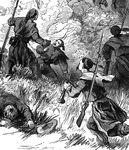
Battle of Roanoke Island
"Battle of Roanoke Island, February 8th, 1862- decisive bayonet charge of the Ninth New York Volunteers…

Battle of Roanoke Island
"Battle of Roanoke Island, February 8th, 1862- decisive bayonet charge of the Ninth New York Volunteers…
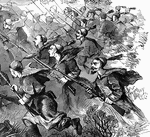
Battle of Roanoke Island
"Battle of Roanoke Island, February 8th, 1862- decisive bayonet charge of the Ninth New York Volunteers…

Place of Battle at Sandy Creek
The Battle of Big Sandy Creek was fought in northwestern New York on May 29 – May 30, 1814, during…

Battle of Savages Station
"Battle of Savages Station. Brigadier General Smith's division hotly engaged with the enemy, at noon,…

Battle of Secessionville
"Battle of Secessionville, James Island, S. C.- bayonet charge of Federal troops, commanded by General…
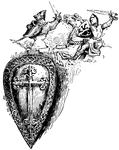
Medieval Shields from the 13th and 14th Centuries
Illustration including one large shield from the first half of the 13th century, bearing a decorative…
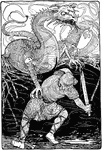
Siegfried Slays the Dragon
In Norse mythology, Siegfried is a brave young man who is raised by the dwarf, Regin. He decides that…
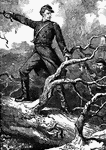
Soldier
An illustration of a soldier charging through an abatis. Abatis, abattis, or abbattis (a French word…

Spotsylvania Courthouse
The Battle of Spotsylvania Court House, sometimes simply referred to as the Battle of Spotsylvania,…

The Moabite Stone
"Found in 1868 at Dîbân, east of the Dead Sea. The monument records the victory of Mesha,…

Stony Point
The Battle of Stony Point was a battle of the American Revolutionary War. Here is a view of Stony Point…
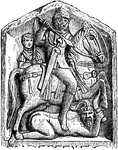
Sueve and Roman Rider
A Roman rider battling a Sueve. Suevi were Germanic people that posed a threat to the Romans.
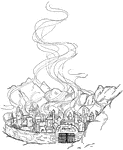
Surtur's Fire in the Golden City
In Norse mythology, Ragnarok is the final battle of good and evil. During this battle, Surtur the flame…

Appearance of the Thames Battle Ground in 1860
The Battle of the Thames, also known as the Battle of Moraviantown, was a decisive American victory…
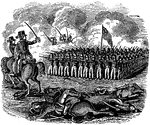
They Conquer Who Endure
"In close array, this firm united band / Guarded on every point will boldly stand; / Their foes attack…
Ticonderoga and the Lake, from Mount Defiance
The crossing between Lakes George and Champlain had been used by natives for thousands of years. The…

The Trumpeter's Horse
"The Trumpeter's Horse. From the painting by Horace Vernet, in the Hertford Collection, London." -Rees,…

Valentine's Day
An illustration of women attempting to shoot men with cupids arrow while cupid sits on a branch above.

Valentine's Day
An illustration of women walking away with the man who's heart they captured by hitting them with Cupid's…
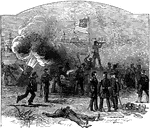
Bombardment of Vera Cruz
American troops bombarding the city of Vera Cruz during the Mexican-American war.

Vicksburg during the Civil War
The Vicksburg Campaign was a series of maneuvers and battles in the Western Theater of the American…

Cave Life in Vicksburg
During the siege, Union gunboats lobbed over 22,000 shells into the town and army artillery fire was…

Porter's Fleet Shelling the Batteries Vicksburg
Union forces bombarded the city all night, from 220 artillery pieces and naval gunfire from Rear Adm.…

The Victoria Cross
"Established in 1856 for acts of bravery in battle. It is a bronze Maltese cross with the royal crest…

The Victors of Salamis by Fernand Cormon
Illustration of a painting of the ancient Greeks returning victorious from the Battle of Salamis against…

Visigoths, Under the Rule of Alaric, on the March after Sacking Rome
Illustration of a great multitude of Visigoth warriors, along with the booty they had taken from Rome,…
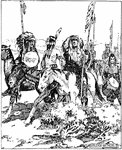
The Return of the Warriors
In the short story of The Arickara Indians, the image depicts the return of the Indian warriors on horses.

Action between the Weehawken and Confederate Iron-clad Atlanta
Naval battle between the Union Weehawken and Confederate Atlanta.

Battle of White Oak Swamp Bridge
"Battle of White Oak Swamp Bridge, Monday June 30th, 1862- Ayres's, Mott's and Randall's batteries checking…
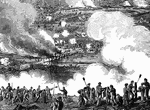
Battle of White Oak Swamp Bridge
"Battle of White Oak Swamp Bridge, Monday June 30th, 1862- Ayres's, Mott's and Randall's batteries checking…

Battle of White Oak Swamp Bridge
"Battle of White Oak Swamp Bridge, Monday June 30th, 1862- Ayres's, Mott's and Randall's batteries checking…
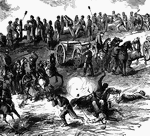
Battle of White Oak Swamp Bridge
"Battle of White Oak Swamp Bridge, Monday June 30th, 1862- Ayres's, Mott's and Randall's batteries checking…
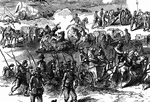
Battle of White Oak Swamp Bridge
"Battle of White Oak Swamp Bridge, Monday June 30th, 1862- Ayres's, Mott's and Randall's batteries checking…
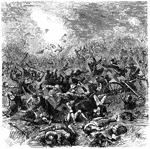
Battle at Zorndorf
The Battle of Zorndorf was a battle fought on August 25, 1758 during the Seven Years' War. The site…
